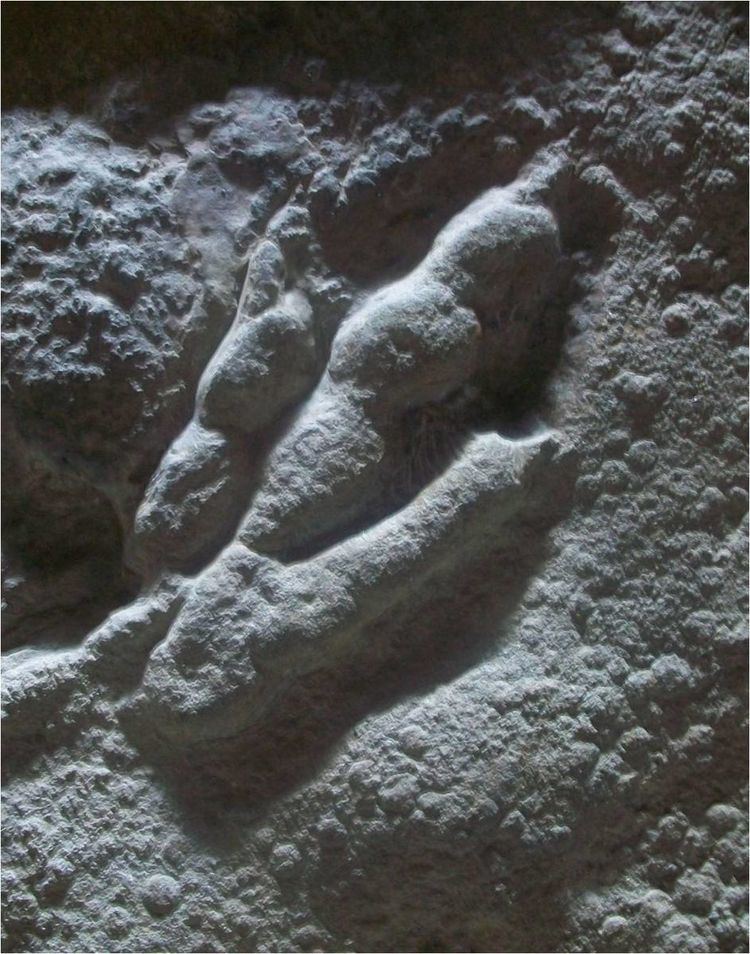 | ||
The 19th century in ichnology refers to advances made between the years 1800 and 1899 in the scientific study of trace fossils, the preserved record of the behavior and physiological processes of ancient life forms, especially fossil footprints. The 19th century was notably the first century in which fossil footprints received scholarly attention. British paleontologist William Buckland performed the first true scientific research on the subject during the early 1830s.
Contents
A slab of Permian-aged sandstone had been discovered in Scotland which preserved a series of unusual footprints. After acquiring the specimen, Buckland experimented with modern animals to ascertain the trackmaker and concluded that the Scottish footprints were made by tortoises. Later in the century famed advocate of evolution Thomas Henry Huxley would refute this attribution and these footprints, called Chelichnus, would remain without an identified trackmaker until scientists recognized that they were actually made by an evolutionary precursor to mammals.
The 1830s also saw the discovery and investigation of unusual hand-shaped footprints from Triassic rocks in Germany that were later named Chirotherium. The identification of the Chirotherium trackmaker proved elusive and suggestions from researchers included everything from monkeys to giant toads and kangaroos. Chirotherium proved to be an enduring ichnological mystery that would not be solved until long into the 20th century.
Some of the most important ichnological research of the 19th century occurred across the Atlantic in the United States. Dinosaur footprints were first discovered there in 1802 when a Massachusetts farm boy stumbled upon bird-like footprints in sandstone that the local clergy mistakenly attributed to the raven that Noah released from his ark during the Biblical Flood. The region's footprints came to the attention of scholars during the mid 1830s when further bird-like dinosaur tracks were discovered elsewhere in the state. These became the lifelong preoccupation of prominent ichnologist Edward Hitchcock. Hitchcock thought the tracks were made by giant flightless birds.
Late in the 19th century prisoners in Nevada discovered a major Ice Age track site at what was once an ancient lake shore. Many of the trackmakers were familiar animals like mammoths or even more modern animals like deer and wolves, but this track site also seemed to preserve the tracks of a sandal-wearing giant. The tracks received significant scholarly and popular attention like satire by Mark Twain who attributed the giant tracks to primitive Nevadan legislators. However, the true identity of the "giant" trackmaker was recognized by paleontologists Joseph Le Conte and Othniel Charles Marsh as a giant ground sloth, possibly of the genus Mylodon.
1800s
1802
1820s
1820s
Late 1820s
1828
1830s
1831
1834
1835
1836
1840s
1842
1843
1845
1846
1847
1848
1850s
1850
1851
1852
1854
1858
1860s
1860
1862
1864
1865
1870s
1877
1879
1880s
Early 1880s
1880
1884
1886
1889
1890s
1890s
1894
1895
